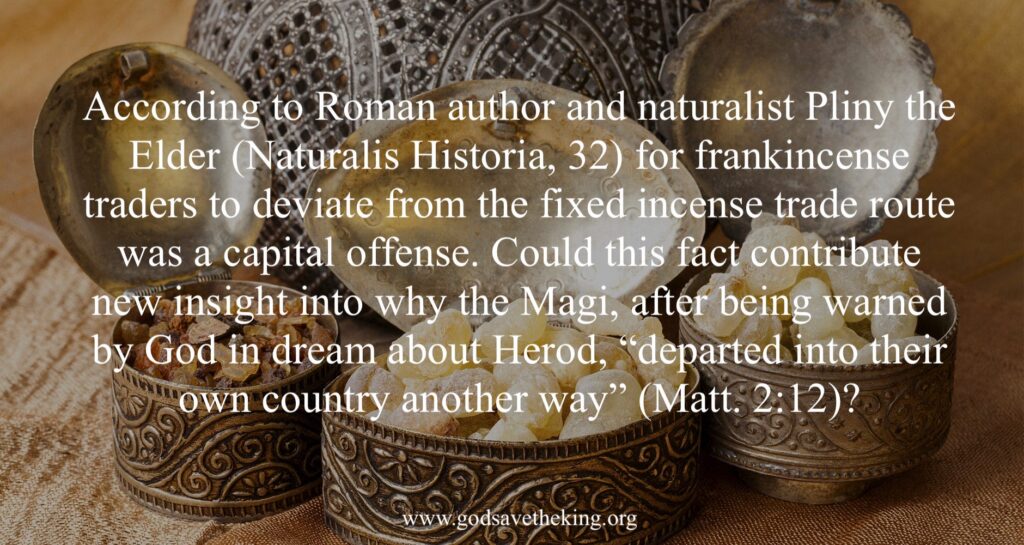
Frankincense was an aromatic tree resin used as incense. It was a luxury item, but was traded in large quantities because of significant use in religious observance and by the wealthy.
According to the Roman author and naturalist Pliny the Elder (Naturalis Historia, 32) for frankincense traders to deviate from the fixed Incense Trade Route was a capital offense.
To deviate from the high road while conveying it, the laws have made a capital offense.
Pliny, Natural History, 32.
The Magi played a dual political-religious role as royal advisors in the Parthian Empire, and were not in a strict sense, merchants, and definitely not frankincense merchants. Therefore, it is unlikely that they adhered to such an ordinance and the Incense Route in direct fashion. That being said, the Incense Route was well-established, well-provisioned, and well-protected–all features that would be necessary for an entourage as large as theirs to travel from Parthia to Judaea and back again. The Incense Route included several key cities and fortresses in Judaea and Nabataea, including Caesarea Maritima and Petra, plus a high concentration of cities and fortresses in the south leading towards the Arabian Peninsula. It is most likely that the Magi approached Judaea by following the Euphrates northwest to Dura Europa, and then cutting across the desert through the oasis city of Palmyra before reaching Damascus. Then, it is most likely that they traveled to Caesarea Maritima first, because that was Herod’s administrative capital and it was logical to find him there. When they did not find him there, they then proceeded to Jerusalem and met with Herod, who directed them to Bethlehem. After arriving in Bethlehem, the Magi presented their gifts, and were then warned by God in a dream (highly in keeping with their job description) not to return to see Herod.
And after being warned by God in a dream not to return to Herod, the Magi left for their own country by another way.
Matthew 2:12 NASB
The Bible gives is little to go on other than “…they returned to their country by another route” (Matt. 2:12 NIV). But considering that the Incense Route was so well-established and included a strong presence in southern Judaea and Nabataea, was this part of the route the Magi took to return home, inspired possibly in part by a well-known ordinance to adhere to established trade routes?
God Save the King